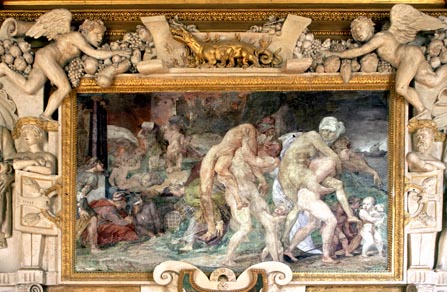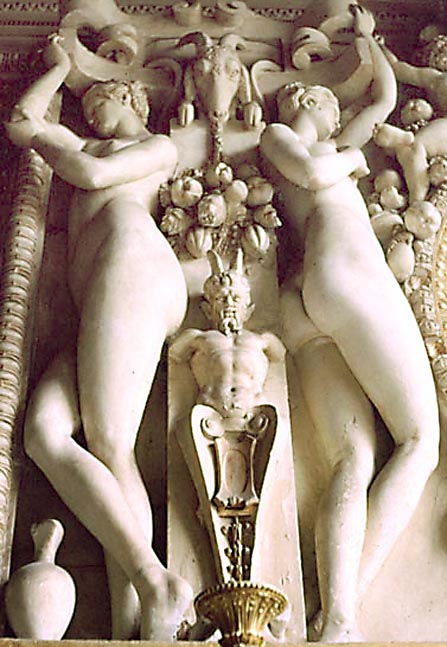 |
|
C'est à cette époque que tout le système des tapisseries
du Moyen Age cède la place à des murs décorés de peintures à fresques encadrées
de motifs sculptés, renouvellements de l'antique déjà pratiqués par
Raphaël au vatican.
François 1er fasciné par la Renaissance italienne fait venir le peintre Rosso de Florence
et l'architecte-décorateur le Primatice de Bologne et de nombreux autres peintres,
huchiers et mosaïstes. Assistés de Français, ces décorateurs formeront
l'École de Fontainebleau
dont l'influence se fera encore sentier au Grand Siècle.
Malheureusement l'humidité, de malheureuses restauration aux 18° et 19°
siècles et des transformations (Disparition des bains du Roi et de la grande galerie d'Ulysse)
eurent raison de nombreuses oeuvres de cette école. |
This is the era when a whole arrangement of mediaeval tapestries on the walls
gave way to walls decorated with frescos framed by sculpted stucco motifs, revivals of antique forms as already practised
by Raphael at the Vatican.
François I was fascinated by the Italian Renaissance.
He brought over the painter Rosso from Florence and the interior architect-decorator Primaticcio from
Bologna as well as many other painters, cabinet makers and mosaic artists. These decorators,
with French assistants, formed the First Fontainebleau School
whose influence was still felt in the Grand Century (XVIIth).
Unfortunately, damp and poor and inappropriate restoration work in the XVIII and XIXth centuries
plus some alterations (removal of the king’s bathroom suite and the Ulysses Gallery) got the better
of many of this school’s creations.
|
 |
 
Fresco by Rosso, surrounded by stucco motifs made to his design drawings. Fresques du Rosso, au milieu des stucs éxécutés sur ses dessins. |
 Primaticcio initiated the canon of the elongated female body. Le Primatice initie le canon allongé du corps féminin. |

The palace in 1540 under François I. Le Château en 1540 sous François 1er. |